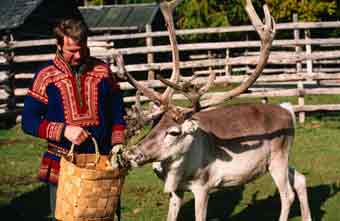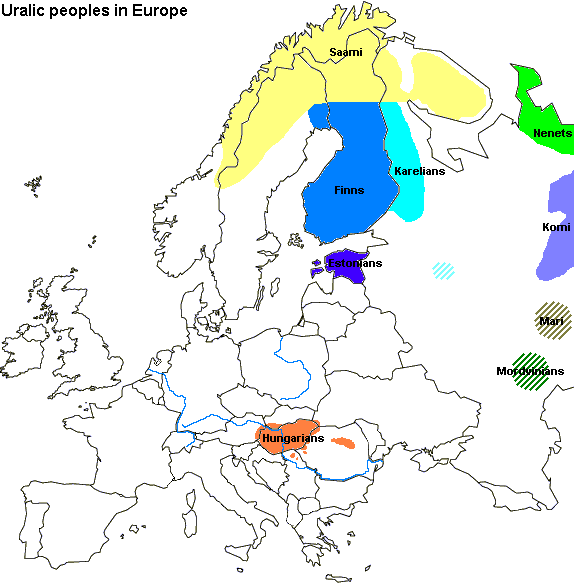The Saami territories are divided between Russia and the Scandinavian countries but they are politically represented in all of those countries by elected parliaments, these are located in Karasjok (Norway), Kiruna (Sweden), Inari (Finland), and Russia.
The Saami are the smallest people of Europe (average 1.50m/4.9feet) and they live from farming, fishing, and especially reindeerbreeding, they are probably the oldest inhabitants of northern Scandinavia and have preserved many cultural aspects of the Uralians, even today their way of life has changed little and although they make use of modern inventions they still live according to the traditions of their ancestors, something that is in my opinion not a lack of civilization but a sign of civilization.
 Culture: the fact that the Finno-Ugric and Samoyedic peoples have inherited many things from the Uralians does not mean that this peoples are all the same, actually the only thing they have in common is that some parts of their culture (and especially their language) can be traced back to a Proto-Uralic origin but most of this peoples differ from eachother like day and night.
Culture: the fact that the Finno-Ugric and Samoyedic peoples have inherited many things from the Uralians does not mean that this peoples are all the same, actually the only thing they have in common is that some parts of their culture (and especially their language) can be traced back to a Proto-Uralic origin but most of this peoples differ from eachother like day and night.The Finns and Estonians for instance have a language that is of indirect Uralic origin but their culture and ethnicity are more related to that of the Germanic peoples, the language of the Saami is also of indirect Uralic origin but in contradiction to the Finns and Estonians their culture and ethnicity has more in common with that of the northern Asian peoples near the Ural and some aspects of their culture even have similarities with the native Americans, I once listened to Saami music and I had a hard time finding out whether it was Saami or Native American.


